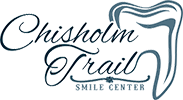Did you know that the average person has about 1000 to 100,000 individual bacteria hanging out on the surface of each tooth? That estimate is for a person with a healthy mouth. Bad oral hygiene can cause your bacteria levels to exceed a billion–per tooth! There are a lot of surprising facts about what’s going on in your mouth on the micro-level, but we can help you translate that information into useful tips that can help you keep your mouth a friendly environment for your teeth and gums.
Do you need a general dentist, Duncan OK? Dr. Matthew Bridges provides preventive and cosmetic dentistry for every member of the family. Call 580-255-4880 to make an appointment at Chisholm Trail Smile Center.
Acids Damage Tooth Enamel – Consume them Sparingly (or Neutralize Them)!
Everyone knows that sugar is bad for your teeth, but did you know that acidic foods and drinks can erode your enamel? Acid erosion may not directly cause cavities, but it can weaken the teeth, make it easier for decay to set in, and wear away your enamel. Unfortunately, acidic foods and beverages are all around us: sodas, lemonade, oranges, Margaritas, grapefruit, et cetera.
Many acidic foods are good for your body, so you shouldn’t cut them out of your diet altogether. Rather, take care in how you eat them to mitigate potential damage. For example, if you eat grapefruit or drink orange juice, take a moment to rinse the mouth with a neutral or neutralizing beverage after you eat them (milk or water). Chewing gum afterwards can also help, as can eating tooth-healthy foods like crunchy fruits and vegetables.
Add Green Tea to Your Daily Routine
Yes, changing the color of your tea can help you protect your teeth and gums, (and prevent black-tea stains, as well). Researchers in Japan have done scientific research with convincing evidence that green tea alone can reduce your chances of developing gum disease and reduce gum inflammation. If you’ve ever been diagnosed with gingivitis or periodontitis, this addition to your diet could make a difference in your oral health.
If you do decide to start drinking green tea, keep in mind that it’s also widely praised for its metabolism-boosting properties and its antioxidant-rich catechins. It’s a win-win for your whole body. Make your own tea at home, rather than buying the bottled varieties, as they usually contain less actual green tea and more sugar and sweeteners.
Chew Gum When You Can’t Brush
Chewing gum can be an effective way to clean the mouth and protect your teeth after you eat. Chewing gum does more than just freshen your breath; it stimulates the production of saliva. This is a good thing because saliva is nature’s best defense against mouth bacteria. It neutralizes the bacterial acids that can cause cavities and rinses away food particles.
Next time you’re buying a pack of gum, look for a brand with xylitol listed as an ingredient. This substance is the only natural sweetener that is actually good for your teeth. It has been clinically proven to block bacteria from consuming other forms of sugar, so it keeps them from producing acids that damage enamel. (Just don’t consume too much xylitol, as it can cause unpleasant digestive side effects.)
Think About the Texture of Your Foods
If you are trying to supply your family with mouth-healthy foods, it pays to think about texture. Foods that are sticky, chewy, or gloopy tend to stick to the teeth worse than other foods. Especially those high in sugar and carbohydrates. If you can still feel great big globs of food sticking to your teeth five minutes after you eat, that means you are feeding your mouth bacteria, which isn’t good. Foods that dissolve quickly in the mouth are equally bad, as your tooth enamel tends to draw those dissolved foods (cookies, cakes, chips, and corn puffs) to them like a magnet.
Crunchy foods that require a great deal of chewing (carrots, celery, cucumber) are best for your teeth. With vegetables like broccoli, cauliflower and crunchy greens, the texture actually cleans the teeth as you chew. Did you ever hear that eating an apple is almost as good as brushing your teeth? That old wives’ tale is actually true.
Maximize Your Fluoride Exposure
Most of us use fluoride-containing toothpastes, and this is crucial step in preventing cavities. However, brushing your teeth twice a day only amounts to about four minutes of contact with fluoride ions. How can you make sure your teeth get the maximum enamel-strengthening benefit from fluoride? If you use a rinse that contains fluoride, don’t rinse with water after you spit it out, and don’t eat or drink anything for at least 30 minutes afterward. If you don’t use a rinse, try not rinsing with water after you brush your teeth. Just spit out the excess toothpaste and leave a bit of residue on your teeth. That clean feeling will last longer and your teeth will get more fluoride exposure.
To learn more about good oral health, visit Dr. Matthew Bridges, general dentist, Duncan OK. We provide family and cosmetic dentistry for every member of your family. Call 580-255-4880 to make an appointment at Chisholm Trail Smile Center.







